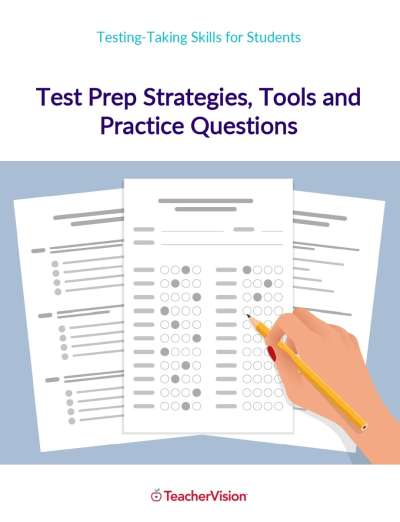INTRODUCTION
This lesson provides students with an opportunity to identify and apply median, mode, range, and mean.
OBJECTIVES
Students will:
- develop a strategic approach to organizing data.
- understand the relationship between numbers in a data set through the calculation of median, mode, mean, and range.
- analyze data from tables and interpret double bar graphs.
SUGGESTED TIME ALLOWANCE
This lesson can be divided into three or four smaller lessons, each lasting about 15-20 minutes.
MATERIALS
Student:
- ball of string
- scissors
- yardstick or meter stick
- Understanding Mean Activity Sheet
- Further Questioning Activity Sheet
- Independent Practice Sheet
- Assessment Questions Sheet
- Extension Table
- Extension Questions
- Mean Homework
Teacher:
- overhead transparencies of:
- Understanding Mean Activity Sheet Answer Key
- Further Questioning Answer Key
- Independent Practice Answer Key
- Assessment Questions Answer Key
- Extension Questions Answer Key
- Mean Homework Answer Key
PROCEDURES
- Introduce key vocabulary: median, mode, mean, range.
- Tell this story to the class.
- Show Whateverville's Temperatures One Week
- Explain that the first step to help the residents of Whateverville solve this problem is to sort the temperatures from least to greatest.
- Ask:
- What is the highest temperature this week? (106°)
- What is the lowest? (0°)
- What is the middle temperature in the set of temperatures ordered from least to greatest? (50°) This is the median.
- What is the temperature that occurs most frequently? (50°) This is the mode.
- What is the difference between the highest temperature and the lowest temperature? (106° - 0° = 106). This is the range.
- Based on the range, would you say the data are clustered together or spread out? Would the range of normal weather patterns be large or small? Explain your reasoning. (The data from Whateverville is spread out; normal weather patterns should have a smaller range.)
- What do you think is an average spring temperature in our area? (Answers will vary.)
- How can you calculate the average or mean temperature in Whateverville? (The mean can be found by adding all the numbers together and dividing by the number of temperatures.)
- Write the simplified definitions for median, mode, mean, and range on the chalkboard for easy reference. median - middle number
- mode - most frequent number
- mean - average
- range - difference between greatest and least number
- Model Your Thinking:
- Continue the story:
- Display Whateverville's Temperature for Ten More Days. Then guide the class using statements and questions such as these:
- Arrange this data from least to greatest. (45°, 48°, 51°, 53°, 55°, 57°, 62°, 63°, 69°, 101°)
- What is the median? (If the data set has two middle numbers, in this case 55° and 57°, then the median is the number halfway between the two-56°.)
- What is the mode? (There is no mode because no number occurs more than once.)
- What is the range? (101 - 45 = 56°)
- What is the mean? (45 + 48 + 51 + 53 + 55 + 57 + 62 + 63 + 69 + 101 = 604. 604 ÷ 10 = 60.4°)
- Which temperature would you eliminate to make all the temperatures fit into spring? (101°)
- How would that affect the mean temperature? (Eliminating the highest value would lower the mean temperature. 503 ÷ 9 = 55.9°)
- Pass out the Understanding Mean Activity Sheet and organize the class into groups of four or more to complete the activity.
- Continue the Whateverville saga with Further Questioning.
- Distribute the Independent Practice Sheet, showing daily temperatures in other cities, and have students complete independently.
The residents of Whateverville need your help! Mayor Wallop, a scientist, has invented a weather machine. Now he's in control of the weather for the entire region and has subjected the residents of Whateverville to so many different temperatures that they don't know what season it is. One day it's snowing; the next day it's over 100 degrees! The plants are dying, and people are getting sick. Take a look at the temperatures in the past week.
0° 10° 50° 50° 62° 90° 106°
If I want to find the mean or average, I add all the temperatures together (0 + 10 + 50 + 50 + 62 + 90 + 106 = 368) and divide by the number of temperatures in the set (7). (368 ¸ 7 = 52.57°). Then I can round to the tenths place (52.6°).
Mayor Wallop hears the complaints of the residents, and for the next 10 days he tries to adjust his temperatures to the average spring temperature in the region.
ASSESSMENT
- To check for understanding, have the students answer the Assessment Questions.
- Students should be able to:
- define median, mode, range, and mean and the steps or operations needed to find them.
- successfully order data from least to greatest.
- identify the mode, if any, and calculate the range from any ordered data set.
- Find the median of both even and odd sets of data.
- solve for the mean, a more complex operation that may require more practice. The additional group activity Understanding Mean should facilitate a fuller comprehension of mean and lead students in the process of estimating how the mean value will change as the values change in the data set.
EXTENSION ACTIVITIES
- Propose this situation to the class.
Jamel is new to Whateverville and decides to open an ice cream shop because temperatures are still extremely warm. To get a sense of his competition, he rates the ice cream at local establishments on five features: color, taste, texture, cone, and price. He uses a scale from 1.0 for poor to 5.0 for delicious. The only decimal part he uses is 0.5. The table shows the results.
- Print out the Extension Questions for each student or ask them as part of a class discussion.
- The problems in Whateverville go on.
Residents spent the summer in their winter coats, hats, gloves, and scarves - anything to keep warm. The temperature didn't rise above 0°. Now mayoral elections are coming to Whateverville, and the residents are highly opinionated. Mayor Wallop will be running against Ms. Hopper, who vows to destroy the weather machine once and for all should she be elected. As the election draws near, Mayor Wallop blesses the region with the most delightful weather. Take a look at the double-bar graph and compare Mayor Wallop's popularity in July to his popularity in October. In Whateverville, everyone over the age of 10 is allowed to vote.
- Display the overhead transparency of Mayor Wallop's Popularity Graph.
- Project the double-bar graph for all students to see and ask questions such as these:
- What does the percentage on the left side of the graph represent? (the percentage of people who approve of his policies)
- What does the bottom part of the graph tell us? (the age groups of the voters)
- How has Mayor Wallop's popularity changed from July to October? (His popularity
has risen dramatically.) Can you think of any reason for this? (He's making the weather nice before the election.) - In which age group was Mayor Wallop most popular in October? (70+).
- In which age group was Mayor Wallop most popular in July? (25-40).
- What percentage of people ages 25-40 approve of Mayor Wallop's policies in October? (42%).
- According to this graph, is Mayor Wallop likely to win the election? (yes)
- Could conditions change before November? (yes)
- Is Mayor Wallop to be trusted? (Answers will vary.)
- Hand out Mean Homework to each student. Have students complete at home. You may want to discuss the answers as part of a class discussion.





